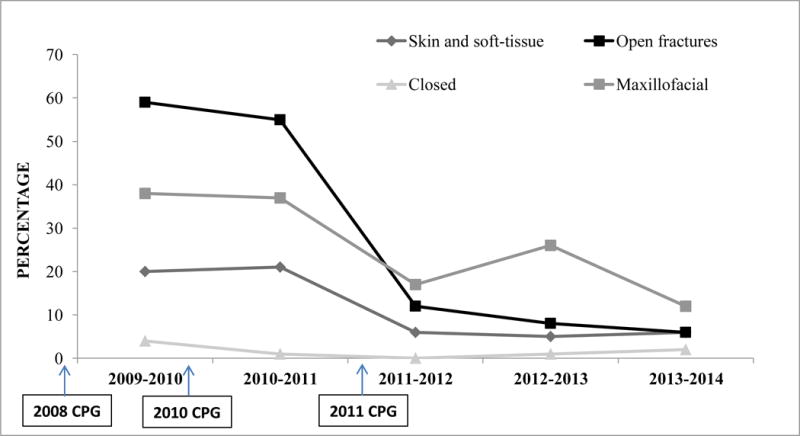Figure 1.

Proportion of wounded military personnel who received expanded Gram-negative coverage by injury pattern. Each time period began in June and ended in May. Overall total patients who received expanded Gram-negative coverage per injury pattern was: open fractures = 703; skin and soft-tissue injuries = 175; closed = 18; and maxillofacial = 133. All injury patterns had significant difference in proportion across the study years with p-values of <0.001 for skin and soft-tissue injuries and open fractures, p=0.007 for closed injuries, and p=0.001 for maxillofacial injuries. The 2008 CPG12 did not recommend use of Gram-negative agents in open fractures of maxillofacial injuries. The 2010 JTS guidance document recommended use of Gram-negative agents in contaminated open fractures and some maxillofacial injuries. The 2011 CPG13 recommended against use of Gram-negative coverage in all injuries except for penetrating abdomen where cefazolin/metronidazole or ertapenem was recommended
